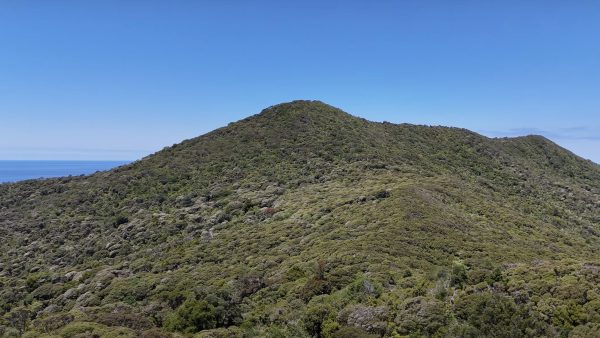Female Red-Eared Slider Turtles are usually a little larger than males. Photo / Rod Morris, Department of Conservation Te Papa Atawhai (1986)
Red-eared slider turtles have become a concerning pest on Aotea Great Barrier Island, posing a significant threat to our precious biodiversity.
These invasive turtles, recognizable by their olive to brown carapace adorned with yellow spots or stripes and a distinctive red stripe behind their eyes, have been observed in the wild, and immediate action is needed to address this issue.
To protect our environment and combat the spread of red-eared slider turtles, the Auckland Council urges residents to take action if they encounter these pests.
If you spot a red-eared slider turtle in the wild, it is essential to catch and contain it if possible, or alternatively, take a clear photo of the turtle.
To report the sighting, please reach out to Auckland Council through email at pestfree@aucklandcouncil.govt.nz or by phone at (09) 429 0258.
In order to safeguard our ecosystems, it is crucial to adhere to the following guidelines:
- Do not release any red-eared sliders from containment within the Auckland region.
- Do not transport red-eared sliders to Aotea/Great Barrier Island group.
- Do not breed, distribute, or release any red-eared sliders on Aotea/Great Barrier Island group.
- As of September 1, 2022, breeding, distributing, or selling any red-eared sliders or other sub-species of Trachemys scripta within the Auckland region is strictly prohibited.
If you currently own red-eared slider turtles, you are allowed to keep them. However, ensure they are securely contained to prevent their escape into the wild.
Should you need to relocate, these animals can be taken to the vet, moved with you during a change of residence, or temporarily housed with someone else while you are on vacation. It is vital to prevent any potential escape into the natural environment.
Residents who pet-sit or provide temporary accommodation for other people’s animals are also covered under these regulations, as long as the turtles are securely contained during their stay.
If you receive animals on a more permanent basis, such as from rescue centers, where ownership is changing hands, you must apply for an exemption. The application process is free, and the necessary form can be obtained from council.
Red-eared slider turtles primarily inhabit still or slow-moving water bodies such as ponds, lakes, wetlands, rivers, and drainage ditches.
Their diet includes plants, zooplankton, mollusks, fish, frogs, crustaceans, insects, gastropods, birds, and small reptiles.
These voracious eaters not only disrupt the delicate balance of our ecosystems but also pose a risk of transmitting diseases to native reptiles and amphibians. Additionally, their basking behaviors can displace nesting wetland birds, and they may contribute to a decline in water quality.
If you are unable to provide proper care for your pet red-eared slider, it is essential to find a responsible individual who can offer it a lifetime home. Alternatively, contacting a relevant pet shop or animal rescue organization for rehoming assistance is highly recommended.
Under no circumstances should red-eared sliders be released into the wild, as this endangers both their survival and that of our native species.
Community participation is key in addressing this issue.
Report sightings of red-eared slider turtles in the wild, either through the iNaturalist platform or by contacting Auckland Council at pestfree@aucklandcouncil.govt.nz, residents can contribute to ongoing efforts to protect our unique environment.








